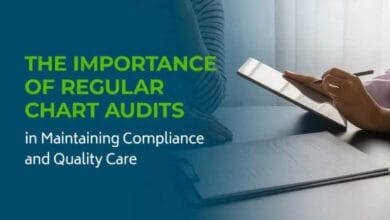How to Integrate Ed-Tech in Curriculum for Better Engagement and Results

These days, a classroom is more than just four walls, chalkboards, and paper textbooks. Teachers’ and students’ learning methods are evolving due to technology. However, the key question still stands: How can ed-tech be incorporated into the curriculum to improve student engagement and outcomes?
Turning classrooms into gadget zones or replacing teachers are not the goals of integrating educational technology. It entails consciously and meaningfully aligning digital resources with curriculum goals in ways that enhance retention, comprehension, and engagement.
Benefits of Ed-Tech Integration in Curriculum

Let’s first examine the results of successfully integrating educational technology into classroom instruction before getting into the “how.” Ed-tech tools provide much more than just novelty, from personalization to interactivity.
The following table lists popular educational technology tools along with their main effects when used in the classroom:
| Ed-Tech Tool | Use in Curriculum | Impact on Engagement | Learning Outcome Boost |
| Interactive Whiteboards | Visual teaching of concepts, drawing, video playback | High – Keeps students visually involved | Better concept clarity |
| Learning Management Systems (LMS) | Assignments, grading, tracking progress | Medium – Increases student accountability | Clear learning paths and structure |
| Game-Based Learning Apps | Subject-based challenges, quizzes, puzzles | Very High – Encourages active participation | Higher retention and recall |
| Virtual Labs | Science experiments simulation | High – Offers safe experimentation | Stronger understanding of processes |
| Augmented Reality (AR) | 3D visualization of complex topics | High – Stimulates curiosity | Enhanced spatial and concept grasp |
| AI-Powered Tutors | Personalized learning recommendations | Moderate – Provides instant feedback | Boost in individual learning speed |
These kinds of tools transform teaching into an experience rather than just a delivery method.
Start with a Clear Curriculum Alignment
Teachers must begin by answering the “why” and “what” questions in order to successfully incorporate ed-tech into the curriculum. What curriculum objective does the tool support, and why is it required?
Digital tools shouldn’t be an afterthought or an add-on. Rather, they ought to be integrated into your curriculum map. Every tech component needs to have a purpose, whether that purpose is to expand understanding, enable practice, or reinforce a concept.
For instance, students can “travel” to the nations they are studying in a geography lesson by utilizing virtual reality. That is curriculum alignment with purposeful use of educational technology.
Choose the Right Tools for the Right Subjects
Not all subjects are appropriate for all forms of educational technology. In a math session, what works in a language class might not work at all. Choose your tools according to:
- Subject relevance
- Student age group
- Device compatibility
- Teacher comfort level
Effectiveness is based on relevance rather than novelty, but it’s easy to get lost in the sea of flashy apps.
Training Teachers Is Just as Important

Learning is designed by teachers. Giving someone a drone without demonstrating how to operate it is equivalent to giving them tools without training.
Tech skill-building sessions and ongoing professional development are crucial. More crucially, teachers should understand when and why to use the tools in accordance with their curriculum objectives.
Peer meetings, workshops, and digital literacy initiatives for teachers foster competent, self-assured tech integration.
Encourage Active, Not Passive, Use
It is not tech integration to spend your days watching videos. Genuine ed-tech use entails communication, innovation, and teamwork.
Students should be encouraged to:
- Make presentations or stories in digital format.
- Participate in online forums for peer review.
- Test theories with simulation software.
- Work together on projects or documents that are shared.
Screen time is not the aim. Meaningful engagement that reflects practical digital skills is the aim.
Use Data-Driven Feedback to Guide Instruction
Real-time analytics are offered by numerous ed-tech platforms. Teachers can use this feedback to:
- Early detection of struggling students
- Adapt lesson plans
- Students are grouped according to their skill levels.
- Examine learning gaps before they become more pronounced.
Prior to the development of ed-tech tools, this type of responsive teaching was more difficult to accomplish.
Ensure Equity in Tech Access
The digital divide is one of ed-tech’s greatest threats. Not all students have access to the same gadgets or dependable internet at home.
Schools need to make sure:
- Device accessibility (shared access or loaner programs)
- Learning resources that work offline
- Equitable involvement in activities enhanced by technology
Rather than being a last-minute fix, inclusivity needs to be incorporated into the planning process.
Create a Culture of Digital Citizenship

Teaching students how to use technology responsibly is essential as they spend more time in digital environments. The curriculum should cover topics like screen time awareness, digital etiquette, plagiarism, and cyberbullying.
For students to use technology effectively, they must be aware of both its advantages and disadvantages.
Real-World Projects Using Ed-Tech
When technology supports project-based learning, its effectiveness increases. Among the examples are:
- Podcast recording for a literature review
- Creating climate change infographics with Canva
- Creating easy math practice games with code
- Making video diaries in history classes
Students are prepared for tech-savvy futures through these activities, which blur the boundaries between education and practical application.
Reevaluate and Update Regularly
Both curriculum and technology are dynamic. At the conclusion of every term or year, review your ed-tech resources. Inquire:
- Did the tool enhance results or engagement?
- Did teachers and students find it easy to use?
- Is there currently a better tool available?
Integration that works is a cycle: Plan → Execute → Consider → Enhance.
Final Thoughts
Ed-tech is now necessary to prepare students for the digital future they already inhabit; it is no longer an option. However, providing tablets or adding ostentatious apps is not enough to achieve meaningful integration. It requires pedagogy, planning, and purpose.
When done correctly, it fosters an environment in the classroom where students are fully engaged, think critically, and solve problems creatively. The goal is to strengthen human connections in education, not to replace them.
FAQs
What is the true meaning of ed-tech integration?
A: It refers to the deliberate use of digital tools in the curriculum to support learning objectives, increase student engagement, and improve results—not just the use of technology for its own sake.
If I don’t have much experience, how can I begin integrating ed-tech?
A: Begin modestly. Select a single tool that is related to a particular lesson. Test it, consider its effects, and then make improvements. Don’t try to make all the changes at once.
Does excessive use of technology pose a risk to students’ attention?
A: Definitely, which is why deliberate, supervised use is essential. During lessons, technology should serve as a teaching tool rather than a source of amusement.
Does successful ed-tech integration require costly tools?
A: Absolutely not. Numerous effective resources, such as Khan Academy, Canva, and Google Classroom, are available for free. The cost of the tools is less important than how you use them.
Is it possible to use ed-tech in early childhood education as well?
A: Definitely. Young learners can profit from digital additions to traditional learning through age-appropriate resources such as interactive storybooks, phonics games, and drawing applications.
How can I tell if ed-tech is helping students achieve better outcomes?
A: Make use of formative evaluations, app analytics, and student input. Monitor participation in class, quiz results, and engagement levels over time.
What steps should educational institutions take to facilitate the integration of ed-tech?
A: Schools need to make investments in equitable access, tech support, training, and infrastructure. Additionally, they ought to develop regulations that give students’ safety and digital literacy top priority.




